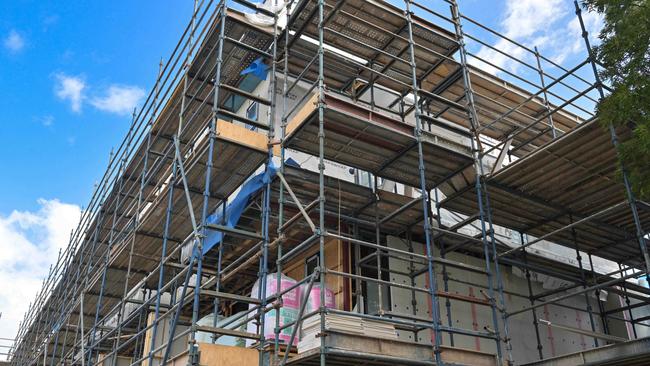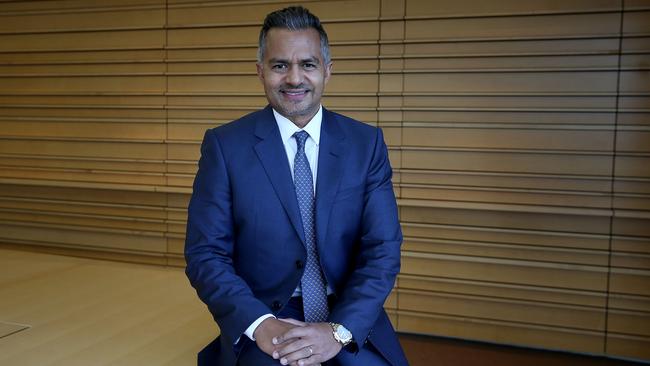
Despite what some might see as a $1 trillion-plus industry super fund sector with origins in the union movement, the funds are very clear that they intend to abide by the requirement imposed under the previous Morrison Coalition government that they act in the best financial interests of their members.
That said, as recent meeting between the Treasurer and institutional investors, including super fund representatives, have shown, there is room for the government to introduce policies and incentives which can help make investment in certain politically worthwhile projects – such as social and affordable housing – more financially attractive.
One move in this direction was the proposed $10bn Housing Affordability Future Fund announced by the Albanese government last year as part of its goal to tackle the increasingly serious issue of housing affordability in Australia.

Federal Housing Minister Julie Collins says there are an estimated 174,000 people on public housing waiting lists.
According to the latest State of the Nation’s housing sector report from the National Housing Finance and Investment Corporation (NHFIC) – more than 377,000 households in Australia have some form of housing need
In a speech on Wednesday to a conference on the state of Australia’s housing industry in Sydney, hosted by NHFIC, Ms Collins said the Housing Affordability Future Fund has the potential to generate the biggest single investment in social and affordable housing in more than a decade, helping to build some 30,000 new social and affordable rental homes in its first five years.
Part of its income will go to providing financial incentives for institutional investors, such as super funds, to back the projects.
The fate of the fund is in the balance, because the Greens are threatening to block it in the Senate unless the government agrees to end negative gearing and drop the 50 per cent deduction for the taxation of capital gains by investors.
Former federal treasurer Wayne Swan, who is now chair of $75bn construction industry super fund Cbus, called the Greens’ move “crazy” and “wrecking ball politics”.
The progress of the legislation will be closely followed by those super funds which are watching to see if the affordable housing sector can be made financially attractive in any way as an investment.
Institutional investors in Australia have not been big investors in the housing market – whether it be private housing or the even less financially attractive social and affordable housing.
But as the housing crisis deepens with Australia’s borders opening up and rental costs rising, and governments determined to take a more co-ordinated policy approach to the problem, there are signs of a shift.

Super funds such as Cbus, UniSuper and HESTA have subscribed for the bonds issued by NHFIC to help fund community housing providers to develop more social housing.
The government is keen to expand the role of NHFIC as part of its housing policy and it has tasked the institution to come up with ways of attracting more super fund capital into the sector.
Cbus has its own construction arm, Cbus Property, which has also undertaken residential housing development such as the up-market Newmarket apartment development in the eastern Sydney suburb of Randwick and has signalled its interest in playing a more active role in the affordable housing sector.
As Swan told the conference yesterday, he is not advocating the widespread use of subsidies to encourage more investment in housing, particularly social and affordable housing.
But he argues that targeted, co-ordinated policies can help bridge the financing gap.
Governments in Britain, Europe and the US have long encouraged the development of low-cost housing, including build-to-rent projects, through favourable tax structures.
One of Australia’s largest super funds, the $150bn Aware Super, has been working with Lendlease in the US in the build-to-rent sector since 2018.
The former First State Super set up a deal to establish a $US2bn partnership in residential housing in major US cities such as New York, Chicago, and Boston.
Aware has drawn on the experience it has learned from overseas to look at the market in Australia by recently committing $1.5bn to expanding its real estate portfolio here, including 1250 affordable housing units by 2025.
The fund says it is already the largest investor in affordable housing in Australia and is keen to work with the federal government to expand its role.
Earlier this month, Aware announced plans for a $900m investment to buy a 22 per cent stake in a leading UK build-to-rent company, Get Living, which was launched in 2013 to operate homes in the former Olympic village in Stratford in East London.
Aware sees the build-to-rent sector in the UK as one which could suit super funds thanks to a long-term steady source of income.

Last November, global fund manager AXA IM Alts agreed to co-invest alongside NHFIC on a development in the western Sydney suburb of Westmead which will provide 350 homes for key workers.
The project will include market priced and affordable build-to-rent dwellings.
Speaking at the NHFIC conference on Wednesday, Stockland chief executive Tarun Gupta said he believes there would be “billions of dollars” of pension funds money available both domestically and from overseas if there were more financially attractive build-to-rent projects in Australia.
While the superannuation sector will be watching the passage of the housing fund bill with interest, the dire need for more low-cost and social housing in Australia can be expected to see it develop as an asset class in Australia for institutional investors in the decades to come.




When federal Treasurer Jim Chalmers last year outlined his grand vision for super funds and the government to come together on projects of national interest, including the construction of more social and affordable housing, the sector made it clear that it was not going to throw money at unprofitable projects.